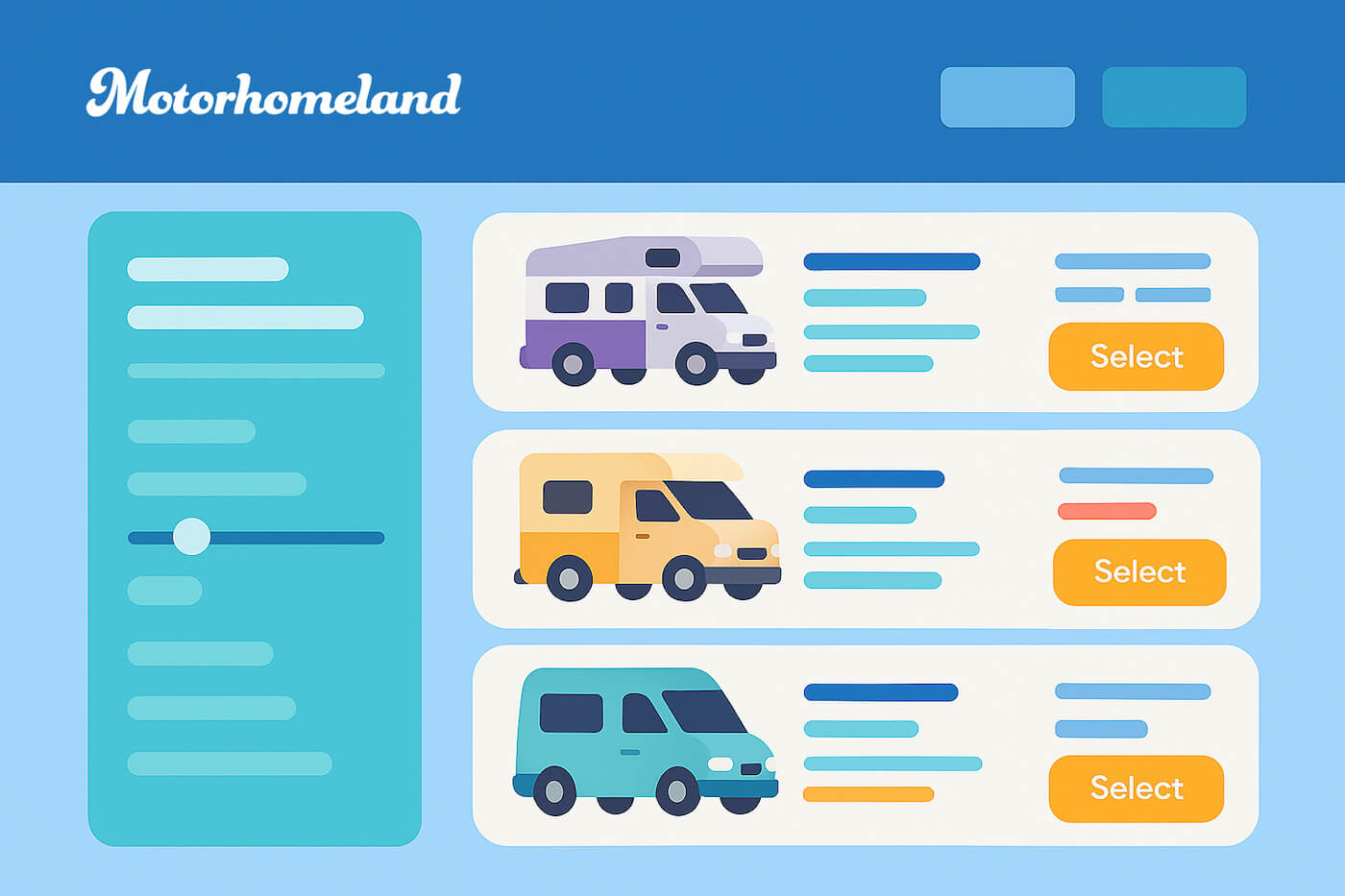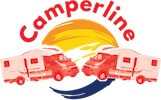Campervanning in Portugal: Best Itineraries, Tips & Essential Advice

Portugal is a land of captivating landscapes, historic cities, and diverse cuisine. For many travel lovers, discovering its hidden corners by campervan is an appealing way to explore at your own pace.
If you enjoy flexibility, a sense of adventure, and the charm of waking up to panoramic views, touring by campervan or motorhome in Portugal might be the perfect plan. Below, you’ll find everything you need to know before setting out on this exciting journey.
TABLE OF CONTENTS
- 1. Why Explore Portugal in a Campervan?
- 2. Renting a Campervan in Portugal
- 3. Top Campervan Road Trips in Portugal
- 4. More Campervan Routes Across Portugal
- 5. Where to Stay Overnight
- 6. Driving a Campervan and Motorhome in Portugal: Key Tips
- 7. Portugal Tolls: How They Work and Payment Options
- 8. Must-See Destinations for Campervan Travel
- 9. Best Time to Visit Portugal in a Campervan
- 10. Budget & Costs for Your Campervan Adventure
- 11. Practical Tips to Make the Most of Your Trip
- 12. Frequently Asked Questions (FAQs)
1. Why Explore Portugal in a Campervan?
There is something unique about embracing the open road in Portugal, a country brimming with history, contrasting landscapes, and vibrant coastal areas. When wandering the southern beaches of the Algarve, you’ll be treated to breathtaking cliffs and hidden coves. Journey north, and you can sample world-famous wines in the Douro Valley or roam through mountainous national parks like Peneda-Gerês. Unlike a conventional trip, campervanning lets you stop spontaneously, linger in quaint villages, and truly immerse yourself in local life.
Portugal’s well-developed roadway network also makes traveling by motorhome remarkably straightforward. Many towns have dedicated campervan service areas, and supermarkets often provide supplies and dumping stations. The mild climate, with pleasant temperatures for much of the year, further enhances the appeal of an all-seasons road trip. Whether you want to surf the Atlantic coast, hike rugged interiors, or discover UNESCO-listed sites, a campervan provides the flexibility to tailor your itinerary without strict schedules.
2. Renting a Campervan in Portugal

If you don’t have a vehicle of your own, Portugal has numerous companies to hire from, concentrated in Faro, Lisbon and Porto; fleets range from small campervans to fully equipped motorhomes, and prices usually sit around €70–€180 per night depending on season and cover.
Timing matters: peak season (June–August) brings higher rates and tighter availability, so booking early pays off. Spring and early autumn often strike the best balance between weather and price. If you plan to cross into Spain or elsewhere in Europe, confirm that cross-border travel is allowed; some agencies also support one-way rentals between cities for an extra fee.
2.1 Compare live offers and book in minutes
There are quite a few companies operating in Portugal (including Mc-Rent, Indie Campers, Rent Easy, GoFree, Autocaravan Express, Anywhere Campers, and Camperline), and checking them one by one is time-consuming. That’s why our site works as a comparator: we pull real-time prices and availability from multiple providers and frequently apply negotiated promotions you won’t see on the supplier sites.
Enter your dates to see vehicles and deals instantly:
For more information or to book, head to our page on hiring a campervan in Portugal.
3. Top Campervan Road Trips in Portugal
Planning a route can be a challenge for first-time visitors, given Portugal’s broad range of attractions. To help you get started, here are three recommended itineraries showcasing the Algarve, Alentejo, Northern Portugal, and the stunning West Coast. Each option offers varied landscapes and highlights.
10-Day Algarve and Alentejo Road Trip

- Itinerary:: Faro > Tavira > Lagos > Sagres > Sines > Évora > Vila Nova de Milfontes > Odeceixe > Aljezur > Faro
- Suggested Duration:: 10 days
- Total Distance:: Approximately 900 km
- Best Travel Season: Spring or early Autumn
- Key Highlights: Rugged cliffs, charming whitewashed towns, local gastronomy, and historical landmarks
Begin in Faro, the gateway to the Algarve, and discover dramatic shorelines, world-famous seafood, and medieval fortresses. As you venture north into the Alentejo region, enjoy inland vineyards and quiet rural villages. This loop returns you to Faro, offering a balance of golden beaches, coastal hiking, and cultural immersion in historic towns like Évora.
Day 1 - Faro
- Stroll along Faro’s old town, known as Cidade Velha, to see the Cathedral and orange-tinted rooftops.
- Enjoy fresh seafood at local markets or waterfront cafés. Try grilled squid or cataplana for a bold taste.
- Camping recommended: Orbitur Camping Quarteira (just a short drive away if you want more facilities).
Day 2 - Tavira
- Admire the Roman bridge crossing the Gilão River and explore the narrow cobbled streets.
- Take a ferry to Tavira Island for a relaxing beach afternoon if weather permits.
- Camping recommended: Possible overnight in public parking by the river (where allowed), or a private campsite nearby.
Day 3 - Lagos
- Marvel at the famed Ponta da Piedade cliffs and discover hidden grottos by boat.
- Walk the historic center, sampling petiscos (Portuguese tapas) in local taverns.
- Camping recommended: A combination of paid camping parks or the local RV area with water and drain facilities.
Day 4 - Sagres
- Witness powerful Atlantic swells at Cabo de São Vicente, mainland Europe’s southwestern tip.
- Visit Sagres Fortress for sweeping ocean views and a sense of maritime history.
- Camping recommended: Cliffside spots near Sagres, but confirm permissions or choose a regional campsite.
Day 5 - Sines
- Roam the old quarter, known as the birthplace of explorer Vasco da Gama.
- Dine on local fish stews at quaint restaurants overlooking the port.
- Camping recommended: Basic overnight lots near the harbor or an official area of service if you need extra facilities.
Day 6 - Évora
- Leave the coast for the UNESCO-listed Évora, where medieval walls encircle a Roman temple and Gothic cathedral.
- Explore the Chapel of Bones (Capela dos Ossos), an unforgettable (and slightly eerie) site.
- Camping recommended: A campsite near Évora with full utilities, offering shady pitches for hot summers.
Day 7 - Vila Nova de Milfontes
- Return to the coast and discover the tranquil beaches along the Alentejo shoreline.
- Take a dip in the Mira River estuary or stroll the scenic coastal paths.
- Camping recommended: Several private campgrounds in the area, or designated service areas for travelers.
Day 8 - Odeceixe
- Relax on Odeceixe Beach, where a river meets the ocean, creating gentle swimming spots.
- Hike up to the viewpoint for stunning coastal panoramas, perfect for photographers.
- Camping recommended: Nearby areas offering water refills and wastewater disposal, or a small local campsite.
Day 9 - Aljezur
- Check out Aljezur’s Moorish castle on the hilltop; the rural setting is uniquely peaceful.
- Surf the surrounding beaches like Arrifana if you crave Atlantic waves.
- Camping recommended: Simple rural lots or campgrounds near the beaches, ensuring you follow local rules.
Day 10 - Return to Faro
- Drive back along inland routes or follow the coastline for one last scenic highlight.
- Consider stopping at local markets for fresh produce and souvenirs from small artisans.
- Enjoy a final evening meal in Faro’s marina district, capping off a diverse road trip.
7-Day Northern Portugal & Douro Valley Itinerary

- Itinerary:: Oporto > Guimarães > Braga > Parque Nacional de Peneda-Gerês > Chaves > Peso da Régua > Oporto
- Suggested Duration:: 7 days
- Total Distance:: Approximately 700 km
- Best Travel Season: Spring or Autumn
- Key Highlights: Medieval towns, lush vineyards, thermal waters, mountainous landscapes
Starting in Oporto, discover the cultural sites around the city, indulge in local port wine, and then progress through centuries-old villages in Guimarães and Braga. Farther north, the dramatic scenery of Peneda-Gerês National Park contrasts with the gentle rolling hills of the Douro wine region, ensuring a varied week of scenic drives and historical discoveries.
Day 1 - Oporto
- Walk the Ribeira district, with its colorful buildings along the Douro River.
- Learn about port wine production in the cellars of Vila Nova de Gaia, across the river.
- Camping recommended: Dedicated RV parks on the outskirts of Oporto, or a private campsite in the region.
Day 2 - Guimarães
- Explore the castle, seen as the birthplace of Portugal, and the well-preserved historic center.
- Sample local pastries like tortas de Guimarães while strolling quaint plazas.
- Camping recommended: Mountainous campsites near the city or official service areas with water/electricity.
Day 3 - Braga
- Marvel at the Bom Jesus do Monte sanctuary, a pilgrimage site with iconic baroque staircases.
- Discover Braga’s ancient cathedral and bustling market squares.
- Camping recommended: Official RV parking on the city’s edges, or a local campground with tranquil surroundings.
Day 4 - Parque Nacional de Peneda-Gerês
- Hike through dense forests, waterfalls, and granite peaks in Portugal’s only national park.
- Spot wildlife like wild ponies and golden eagles if you venture deeper into nature.
- Camping recommended: Scenic camping areas such as Parque Cerdeira, offering direct access to hiking trails.
Day 5 - Chaves
- Relax at the famed thermal spas and taste the local pastel de Chaves pastry.
- Explore Roman heritage sites, including a well-preserved bridge over the Tâmega River.
- Camping recommended: Might find municipal service areas or small family-run campsites near town.
Day 6 - Peso da Régua (Douro Valley)
- Drive alongside terraced vineyards, a landscape recognized by UNESCO.
- Visit a local quinta (wine estate) for tastings and glean insight into port wine traditions.
- Camping recommended: Douro-area campsites perched near steep valley slopes, some with on-site wine experiences.
Day 7 - Return to Oporto
- Follow the Douro River downstream, stopping for final vineyard views.
- Buy gastronomic souvenirs like olive oil or handcrafted ceramics at roadside stands.
- Settle back into Oporto, ending your northern Portugal adventure on a high note.
8-Day West Coast Journey

- Itinerary:: Lisbon > Sintra > Ericeira > Peniche > Nazaré > Figueira da Foz > Aveiro > Coimbra (optional) > Lisbon
- Suggested Duration:: 8 days
- Total Distance:: Approximately 750 km
- Best Travel Season: Late Spring, Summer, or early Fall
- Key Highlights: Surf spots, palaces, cliff views, lively fishing towns
This cross-section of central Portugal begins and ends in Lisbon, weaving along dramatic coastlines dotted with surf meccas like Ericeira and Peniche. You’ll also discover the fairy-tale architecture of Sintra, the renowned giant waves of Nazaré, and the canals of Aveiro, sometimes called the “Venice of Portugal.” Incorporate a quick stop in Coimbra if you have time; it’s a historic university city with deep cultural roots.
Day 1 - Lisbon
- Visit the Tower of Belém and the Jerónimos Monastery, both UNESCO World Heritage Sites.
- Nibble on traditional pastéis de nata at a local pastelaria.
- Camping recommended: Secure parking areas for campervans on the edges of the city or official campsites.
Day 2 - Sintra
- Tour the whimsical Pena Palace, set atop the lush Sintra Mountains.
- Explore the mysterious Quinta da Regaleira, known for its initiation well and gardens.
- Camping recommended: Official campervan parking areas or a local campsite away from the busy town center.
Day 3 - Ericeira
- Enjoy a globally recognized surf reserve or simply watch the pros ride Atlantic swells.
- Wander narrow streets lined with white-and-blue fishermen’s houses.
- Camping recommended: Multiple surf-oriented campgrounds providing comfortable facilities.
Day 4 - Peniche
- Surf at Supertubos beach if you’re up for powerful, hollow waves.
- Take a boat trip to the Berlengas Archipelago; explore nature reserves if conditions allow.
- Camping recommended: Basic public lots or dedicated campsites near the beaches; check local signage.
Day 5 - Nazaré
- Photograph the colossal winter waves at Praia do Norte, among the biggest in the world.
- Take the funicular up to Sítio for panoramic coastal views and fresh seafood stalls.
- Camping recommended: Camp parks or municipal service areas, ensuring you have space during peak times.
Day 6 - Figueira da Foz
- Relax on extensive sandy shores known for water sports and vibrant nightlife.
- Explore the local marina, or stroll to see 19th-century buildings in the old quarter.
- Camping recommended: Several camping facilities dot the coastline, with direct beach access.
Day 7 - Aveiro (Optional Stop in Coimbra)
- Discover Aveiro’s canals aboard a colorful moliceiro boat for a scenic city tour.
- Taste ovos moles, a unique sweet typical of the region.
- Camping recommended: Overnight near the canals or an official area in the outskirts for quieter stays.
Day 8 - Return to Lisbon
- Drive southward, possibly stopping in Coimbra to witness its old university and treasured library.
- Complete your circular route, returning to Lisbon with new memories of coastal towns, dunes, and cultural highlights.
4. More Campervan Routes Across Portugal

If you have extra time or want to diversify your experience, Portugal boasts numerous additional routes. Below are a few popular suggestions:
- Trans-Interior Expedition (Approx. 400 km): Bragança > Montesinho Natural Park > Guarda > Serra da Estrela. Perfect for mountain enthusiasts and rural tourism lovers.
- Historic Village Trail (Approx. 300 km): Sortelha > Belmonte > Castelo Novo > Monsanto. Immerse yourself in medieval fortresses and granite landscapes.
- Wine and Culture Loop (Approx. 450 km): Setúbal > Palmela > Arraiolos > Estremoz. Sample local wines and cheeses, admire cork tree groves, and visit centuries-old castles that dot the horizon.
Each of these routes offers distinct scenery and cultural draws. Some highlight dramatic nature, such as mountainous terrains, while others focus on gastronomic or historical wonders. Distances in Portugal are not overwhelming, allowing you to combine multiple routes if you have a more extended vacation.
5. Where to Stay Overnight

Securing a comfortable spot to rest each evening is crucial for an enjoyable campervan adventure. Portugal maintains a growing network of designated overnight areas and private campgrounds, complemented by municipal stops that often provide basic services at affordable rates. Understanding the rules and facilities available will help ensure a smooth trip.
5.1 Campervan and Motorhome Overnight Regulations in Portugal
In response to pressures on coastal and sensitive natural areas, Portugal refined its overnight regulations for campervans and motorhomes. Currently, free overnight stays are permitted in most municipalities for up to 48 hours, outside protected zones (e.g., Natura 2000 sites or areas of ecological significance), unless local laws specify otherwise. Official updates note that staying beyond 48 hours in the same municipality may lead to fines, so plan your route accordingly.
However, extended regulations apply in some specific regions, especially in nature reserves. According to the latest reforms, certain sensitive zones, such as parts of the southwestern coast, remain off-limits for wild camping. Protected areas often require your vehicle to stay in designated service points or official camps. When uncertain, consult platforms like Park4Night, CaraMaps, or CampingCarPortugal, which collectively offer user reviews and real-time insights into local overnight rules.
5.2 Tips for a Safe and Comfortable Stay
- Check municipal signs: Some towns enforce strict parking and overnight rules, so verify local regulations. Respect posted signs and instructions to minimize issues.
- Choose designated areas: Campsites or service stations often allow secure pernoctas with amenities like electricity, water, and dump stations. Using them helps maintain a positive relationship with local communities.
- Arrive early: Especially in summer, popular coastal towns fill quickly. Arriving by afternoon improves your chances of finding legit spots before crowds appear.
- Limit noise and litter: Keep gatherings low-key, properly dispose of trash, and never leave waste behind. This fosters a cooperative atmosphere between travelers and local residents.
- Visit CampingCarPortugal or CaraMaps for updated listings, while Park4Night provides user-generated tips, often highlighting unlisted gems.
6. Driving a Campervan and Motorhome in Portugal: Key Tips
Driving in any foreign destination requires awareness of local rules. In Portugal, you drive on the right, seat belts are mandatory for all passengers, and children under 12 must sit in age-appropriate seats. Below is a brief list of key considerations for traveling by campervan or motorhome within Portugal’s borders:
- Speed limits: 120 km/h on highways for vehicles under 3.5t, 100 km/h for heavier motorhomes; 90 km/h or less on smaller roads.
- Peajes (Tolls): Many highways have tolls, with some sections using electronic-only systems. For more detail, see the dedicated tolls section below.
- Driver’s license: Most EU and UK licenses are recognized if you’re over 21 or 25 (depending on rental policies). Always carry a valid passport or national ID card.
- Carriage documents: Have your vehicle’s registration, insurance, and reflective vests ready. At least one warning triangle is also required.
- Alcohol limit: 0.5 g/l is the legal blood-alcohol level; for inexperienced drivers (license under 3 years), the limit is 0.2 g/l.
- Road conditions: Many main roads are modern and well-maintained, though remote or mountain routes can be narrower or steeper.
- Gas stations: Operating hours vary; along highways, many are 24-hour. Self-service is common, and you can pay by card or cash. Bear in mind that carrying spare fuel in portable cans is discouraged or restricted.
- Climate considerations: Summer can be extremely hot in southern regions, while winter weather may bring frost to inland mountainous areas. Plan your route accordingly.
7. Portugal Tolls: How They Work and Payment Options

Driving on Portuguese highways frequently involves paying tolls. While some routes have manned toll booths where you can pay by cash or card, several stretches are now “Electronic Toll Only”, requiring a more modernized payment method. Understanding how tolls operate will help you avoid confusion and potential fines. Two main systems dominate: the traditional system with gates and the purely electronic system, which uses overhead sensors to register your vehicle’s license plate.
Whether you plan to skim across the Algarve, venture along the A25 near the Spanish border, or explore the central A8 corridor, choosing the right toll arrangement is crucial. Many visitors prefer to register in advance to ensure a worry-free journey. Below, you’ll find an overview of recommended steps and available payment options:
- EasyToll: Ideal for those staying several days or weeks. You link a credit card to your license plate at designated Welcome Points along the border or via the official website portugaltolls.com. Charges are automatically deducted.
- TollCard: Offers prepaid options (5, 10, 20, or 40 EUR) that you can purchase online or at select gas stations, then activate via SMS. More info at TollCard official site.
- TollService 3-Day Pass: Best for short-term travelers who want unlimited use of electronic highways over a set period.
- Via Verde Box: A transponder-based system that attaches to your windshield, commonly used by locals. Pay automatically without stopping at booths, valid on all Portuguese toll roads. Some devices even work across borders in Spain or France.
Tips: Ensure your chosen method is correctly validated to avoid double charges. If renting a campervan, ask the rental company if they offer a toll device. While you can avoid many tolls by selecting national roads, these alternative routes might take longer. Balancing scenic backroads with faster highways is often the best approach, letting you decide how to manage your time and budget. And do keep an eye on signage: highways labeled “Electronic Toll Only” do not accept manual payment.
8. Must-See Destinations for Campervan Travel

Portugal’s natural diversity makes it a dream for campervan travelers. From coastal cliffs to inland nature reserves, there are some standout spots you simply shouldn’t miss:
- Sudoeste Alentejano e Costa Vicentina Natural Park – Known for wild coastlines and unspoiled beaches, perfect for surfers and those seeking raw Atlantic scenery. Learn more here: Costa Vicentina Park.
- Península de Troia – A scenic peninsula with white sand beaches, calm waters, and occasional dolphin sightings near the mouth of the Sado Estuary.
- Serra da Estrela – Portugal’s highest mountain range, offering rugged hiking trails, traditional shepherd villages, and famous cheeses.
- Arrábida Natural Park – South of Lisbon, featuring turquoise waters, limestone cliffs, and a variety of hidden coves backed by lush Mediterranean vegetation.
- Peniche-Baleal – Another surf hotspot with broad sandy beaches and intriguing rocky headlands, especially notable for water sports enthusiasts.
- Sintra-Cascais Natural Park – Home to the iconic Pena Palace and dense forested hills, providing a perfect blend of culture and nature in short distances.
- Douro International Natural Park – Remote, inland frontier landscapes along the Douro River’s course by the Spanish border. Great for birdwatching and scenic viewpoints.
- Peneda-Gerês National Park – Abundant waterfalls, flora, and fauna in Portugal’s sole official national park, plus historic villages scattered around its boundaries.
You can also consult official tourism resources such as VisitPortugal for up-to-date options and fairly unknown gems. These scenic highlights let you mix beaches with forest treks, farmland with cultural landmarks, giving your road trip a well-rounded experience.
9. Best Time to Visit Portugal in a Campervan

Portugal benefits from a generally mild climate, making campervan trips feasible year-round. Nonetheless, seasonal variations in temperature and crowd levels can affect your itinerary. Choose the time that fits your preferences:
- Late Spring (April–June): Comfortable temperatures, blossoming landscapes, and fewer tourists. Ideal for hiking in the Alentejo or exploring the coast without summer’s intense heat.
- Summer (July–August): Long sunny days are excellent for beach-lovers, but coastal hotspots can become crowded and campsites fill quickly. Expect higher prices in main tourist areas.
- Fall (September–October): This season brings still-warm weather, especially in the south, along with fewer visitors. Vineyards turn golden and harvest celebrations kick in across wine regions.
- Winter (November–March): Mild along the coasts but chilly in mountain areas, with some snow in Serra da Estrela. Winter is quieter, enabling a peaceful road trip and discounted rates, albeit with shorter daylight hours.
Overall, the best all-round period often touted by seasoned travelers to Portugal is late spring or early autumn. You enjoy pleasant weather, scenic diversity, and minimal congestion. However, each stretch of time has its positives. If you specifically want to surf big waves, winter is prime near Nazaré, whereas scenic blossoming is spectacular in the Douro region come early spring.
10. Budget & Costs for Your Campervan Adventure

One beauty of traveling by campervan or motorhome in Portugal is the flexibility in tailoring your budget. You can spend modestly by cooking meals onboard and seeking free or inexpensive overnight spots, or you can indulge in award-winning restaurants and scenic private campgrounds. Below is a rough outline of typical trip expenses:
- Vehicle Rental or Fuel: Rental rates vary from €70 to €180 per day depending on season and motorhome size; fuel (diesel or gasoline) is around €1.60–€2.00 per liter.
- Tolls: Plan on a few euros for short segments or up to €20+ for longer journeys on highways. Registering for EasyToll or TollCard ensures seamless passage in electronic-only lanes.
- Campgrounds and Overnight Fees: Simple motorhome areas can cost from €5–€10 a night, while bigger campsites with pools, power hookups, and full amenities might be €15–€25. Premium coastal locations in summer can be higher.
- Groceries and Dining: Local produce in supermarkets or farmers’ markets is affordable; a typical meal out in a casual eatery can cost around €10–€15. Fresh fish or seafood in tourist zones can be pricier but is often worth trying at least once.
- Additional Costs: You may spend on ferries (if venturing to certain coastal areas), national park entrance fees, or specialized activities like boat tours in the Douro or surfboard rentals in Ericeira, roughly €15–€45 per session.
As a guideline, a midrange traveler might manage with €50–€80 per day (not counting vehicle rental) if staying mostly in official service areas. Of course, your own style—wild beaches, gastronomic splurges, or campsite comforts—will determine how your budget balances out. Look for seasonal offers, half-price campsite deals in winter, or shared group rentals if traveling with friends to defray costs.
11. Practical Tips to Make the Most of Your Trip

- Plan for variable terrain: Portugal has both lush mountains and flat coastal stretches. Be prepared for winding roads or steep gradients, especially in northern and interior regions.
- Keep community ties positive: Always dispose of your trash responsibly and avoid blocking local access. A friendly demeanor fosters a welcoming environment for campervanners.
- Use resourceful apps: Book campsites or check parking availability through Park4Night, CaraMaps, or CampingCarPortugal. Read user reviews to glean location specifics.
- Try local dishes: Portugal is renowned for its seafood—like sardinhas assadas and bacalhau—as well as hearty meat stews in Alentejo. Don’t overlook pastel de nata for dessert.
- Stock supplies in larger towns: Fill up on groceries, fuel, and water in well-equipped areas, especially before heading into remote zones or national parks.
- Respect quiet hours: Many rural and coastal sites have post-sunset quietness. Keep volumes down to maintain good relations and to enjoy the serene environment.
- Leverage off-peak periods: If possible, travel in spring or fall. You’ll avoid the densest crowds and still have pleasant temperatures for beaches or countryside walks.
- Consider ferry connections: A few areas, such as crossing from Setúbal to the Tróia Peninsula, can shorten drives. Check schedules, as ferry timetables may change depending on season.
12. Frequently Asked Questions (FAQs)
- Can I park my campervan or motorhome anywhere along the coast of Portugal?
Coastal regions often have specific restrictions, especially in popular or environmentally sensitive areas. Local signs may prohibit overnight stays. Always verify local regulations or look for designated spots or campgrounds to avoid fines. - Do I need an international driving permit to drive a campervan in Portugal?
If you hold an EU or UK license in plastic card format and it’s still valid, you generally do not need an additional permit. However, non-EU drivers or those with older paper licenses should confirm with their rental company or local authority. - How do I handle waste disposal while traveling?
Portugal has improved infrastructure for travelers. Many service stations and official campsites provide gray water and toilet cassette emptying points. Always use the correct facilities and never discard waste in unauthorized locations. - Is wild camping fully prohibited in Portugal?
Free camping can be restricted, and updated laws limit stays to 48 hours in the same municipality, excluding protected areas. Whenever possible, use authorized locations or campsites for peace of mind and to protect natural habitats. - What’s the average cost of a meal at a typical Portuguese restaurant?
In many local tasquinhas, you can enjoy a main course, soup, and drink for around €10–€15. More touristy spots might cost extra, especially for fish and seafood, but the unique flavors are often worth it. - Are dogs allowed at campsites and natural parks?
Most campsites accommodate pets, but confirm in advance as policies differ. National and natural parks typically allow leashed dogs, though some beaches or protected zones may impose seasonal bans. Always keep your dog under control and clean up accordingly.






